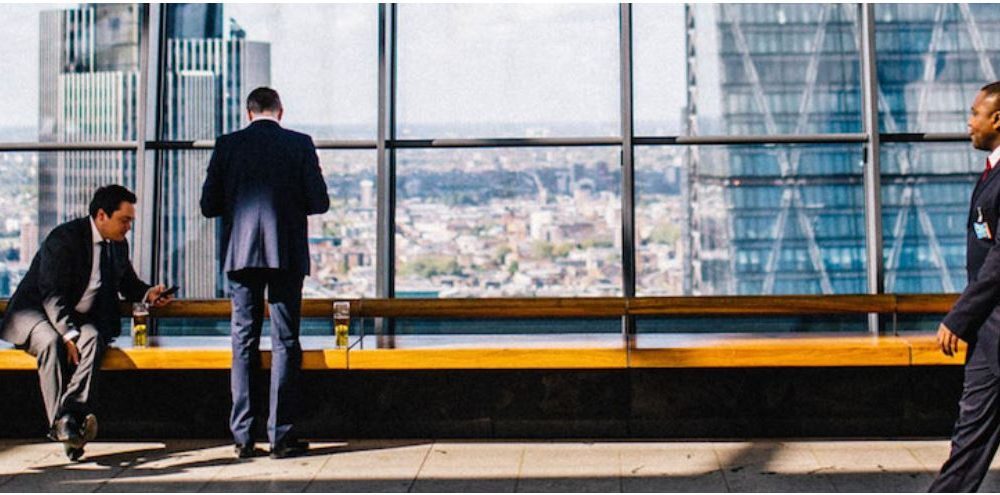By Amanda Roosa
“How we spend our days is, of course, how we spend our lives.” – Annie Dillard
The average person spends a third of their life at work. That’s over 90,000 hours in a lifetime. With so many of our days spent at work, it’s safe to say where we work affects our lives—not just the building itself, but the neighborhood and even the commute. That’s why it’s important that businesses take office design and, increasingly, their relationship to the surrounding community into consideration.
This latter endeavor is what placemaking is all about—it’s a collaborative process meant to shape an environment in a way that strengthens the connection between the people that inhabit and share the space, to maximize value to everyone.
How we think about space, from West to East
The first roadblock to building community is to draw boundaries. Western concepts of space often involve boundaries—we are notorious for categorizing and organizing smaller things within larger things. Here’s an example from Quartz: “An office is in New York City, which is in the United States. The sales team is inside the office, and Jules is a member of the sales team.”
We spend so much time working inside buildings that it becomes dangerously easy to think of where we work as separate from our outside environment.
The East, on the other hand, seems to understand space in a more collaborative manner. For example: “In Japan, a building can’t be in Tokyo without Tokyo being in the building.” In fact, the Japanese word tokoro is used to describe the location of something as well as a state of being. “The idea of place is indistinguishable from the historical, cultural, social, and other connections contained within it. The idea of tokoro therefore implies the idea of context, as the place is inevitably connected with all the activities around it,” writes Jarrold McGrath.
We spend so much time working inside buildings that it becomes dangerously easy to think of where we work as separate from our outside environment.
No ivory towers
Western businesses could learn from Eastern concepts of space. While placemaking typically involves building community in public spaces, the process can be applied more broadly to any shared space. Millennials and younger generations are calling for businesses to have a positive impact on the wider community and one of the first things a company can do is turn its attention to its immediate surroundings. Understanding space with a more collaborative mindset can help prevent enterprises from colonizing neighborhoods and turning them into gentrified business parks—at least, not without giving something back.
For example, some tech companies like Airbnb, Google, and Facebook have made the news for providing nearly all amenities on site, creating workplaces “where tech workers get their own hermetically-sealed everything, from gyms to restaurants to transit” instead of becoming part of the neighborhood and part of a solution to community issues.
In an effort to get tech giants to engage with the community and boost local restaurants and businesses, Mountain View banned Facebook’s new campus from providing a free cafeteria. Legislation supports this, stipulating that “companies cannot routinely fund more than 50 percent of employees’ meals, but it can fully subsidize meals if they come from open-to-the-public restaurants.”
Understanding space with a more collaborative mindset can help prevent enterprises from colonizing neighborhoods and turning them into gentrified business parks—at least, not without giving something back.
These tech companies give back to the community, but sometimes community-building can begin right out the front door. As Tiffany Apczynski, Zendesk’s director of social responsibility advised in The Guardian, “Don’t lock yourself up in your ivory tower.”
Being a good neighbor pays in dividends
Beyond lunching out, a 2017 Deloitte study found that employees like it when businesses incorporate community involvement into the work day. “Of the 1,000 employees surveyed, the report concluded that 70 percent believe that volunteer opportunities boost morale more than company mixers.” Community engagement helps create a positive work environment inside the office, and it also reduces turnover and positively impacts your bottom line.
Of course, creating shared community both inside and outside the office should also directly benefit external organizations, whether through volunteering or the longer-term impact of helping employees to feel like they have a stake in improving the environment where they spend so much of their time.
So how does one keep the doors to the ivory tower open? Try adopting a tokoro mindset and encourage employees to be responsible for understanding the area where they arguably live and work. As Director of Corporate Responsibility at Zendesk Megan Trotter advises, being a good neighbor is mostly about getting out and meeting the people around you. Try offering small group activities that allow employees to “have a conversation, find a commonality, and build community.” Look for opportunities to lend existing skill sets to nearby nonprofits, schools, health and charity organizations, or maybe even just organize an informal “clean up the neighborhood” day or sponsor small group lunches out at local establishments as a starting point.
When done well, placemaking will and should affect the workplace and by extension, the community and even, ultimately, your life.

